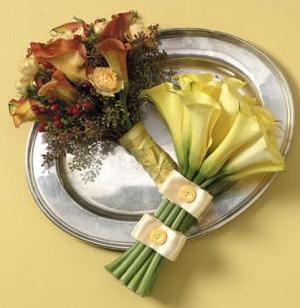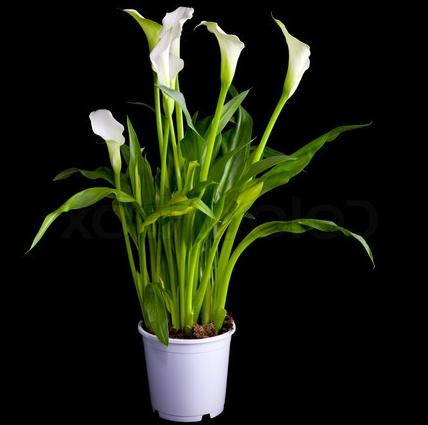Callas: caring for a house plant
Elegant and graceful plants with bedspreadsflowers of different colors and juicy-green leaves - such are callas. Care for them is simple. In response, you can get original blooming yellow, crimson lilac and other flowers. The most familiar and widespread flower with white color.
Calla belongs to the family of Aroids. Its Latin name is Zantedeschia aethiopica. It is also known under the following names: Ethiopian squirrel, zandedeskiya or lilykalla.
Description and characteristics
This perennial plant comes from South Africa. It reaches a height of eighty centimeters in the natural habitat (warm moist forests) and has six species. Its characteristics: a stem-like fleshy root, a heart-shaped leaf of a dark green color, an inflorescence is an ear with a covering large leaf at the base that surrounds it. This "veil" can have a different color: from white to black. Decorative flowers last a month and a half.
Home callas
Decent adornment of any room ishome callas. Care of it allows you to give special refinement to rooms, terraces, balconies, loggias and winter gardens. Especially popular for these purposes are New Zealand callas with chic foliage and flowers of different shades.
Home callas, care of which during the cultivation is not particularly difficult, grow up to seventy centimeters. Their vitality lasts up to eight years.
Care for Callas
The plant loves well-lit places, but notDirect sunlight is recommended. It is also necessary to avoid drafts. For calla, the optimal temperature in the summer is about twenty-three degrees, in winter - about thirteen degrees. Watering should be carried out as the soil dries out, except for the summer period. Then the flower requires a little attention, but it's still the same, the capricious callas. Care on hot days consists in daily watering and spraying the rapidly evaporating moisture of large leaves of the plant. Feed it several times a month. Suitable for any complex fertilizer for flowering plants. In autumn, top-dressing is stopped and watering is reduced. Yellowing and wilted leaves are cut.
Until spring, the plant must be stored in a coolDo not allow the soil to dry out. In this period, the semi-darkness is suitable. In the spring, it is necessary to accustom the calla to the bright light gradually. Sprout the tuber in the spring, placing it in a lighted place and spraying with water two or three times a week. After about two weeks, when the tuber becomes heavy and dense, it is planted in a pot.
The substrate is prepared in the following relationship: sod land (three), sand (one), charcoal (one and a half). It is necessary to monitor the fertility and water permeability of the soil, keeping it moist. Seedlings appear in about three weeks. Then the plant is rapidly developing, turning for two weeks into a lush bush with peduncles and forming buds. Buds are opened in about five days and bloom for up to one and a half months.
Calla is a flower, care of which must be verysensitive to prevent the appearance of diseases. The plant is prone to fungal diseases, such as: anthracnose, bacterial, root and sulfur rot. They may appear due to incorrect conditions of detention. That is, due to lack of lighting, excessive excess or lack of watering, the effects of drafts, overheating or supercooling of the plant, lack of make-up and infertility of the soil.
After the plant fades, the flower stalks are cut off, and the plant is transplanted into a larger pot. Callu is multiplied by dividing rhizomes during transplantation.
</ p>




